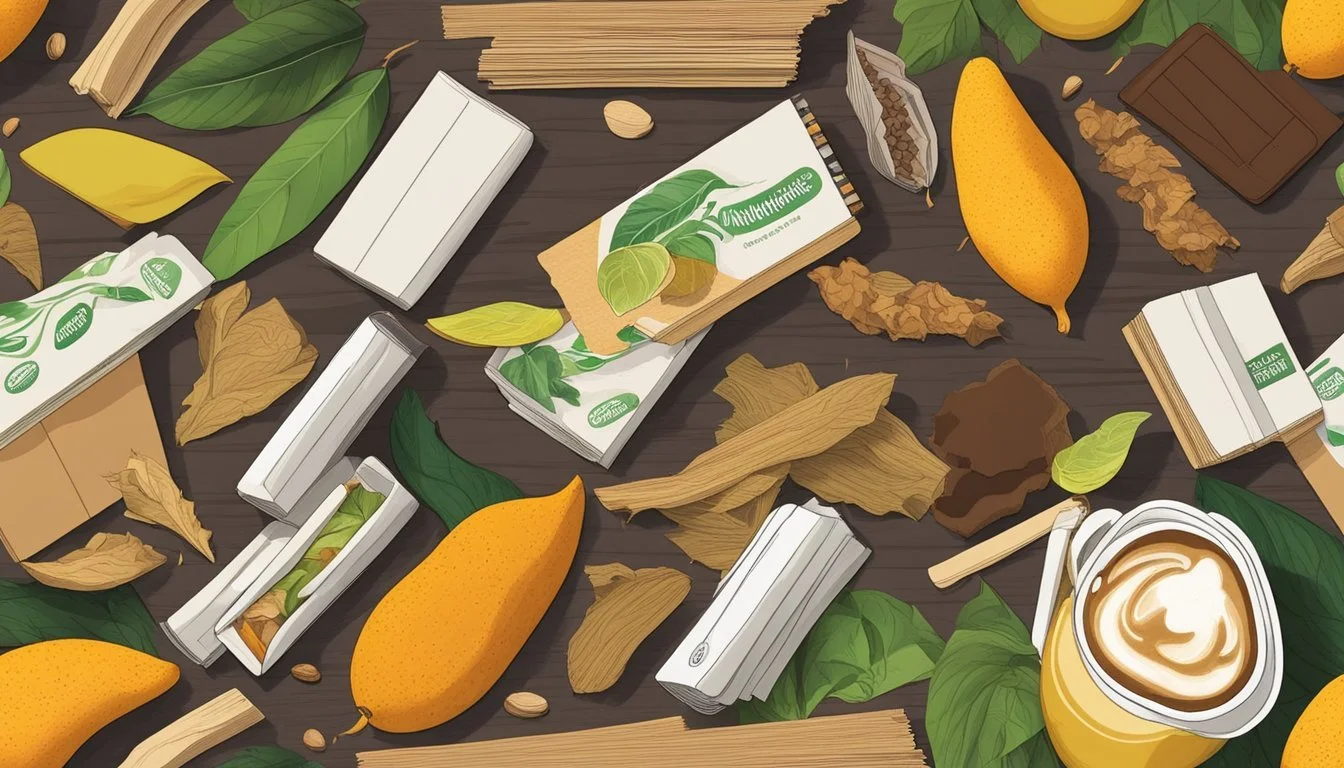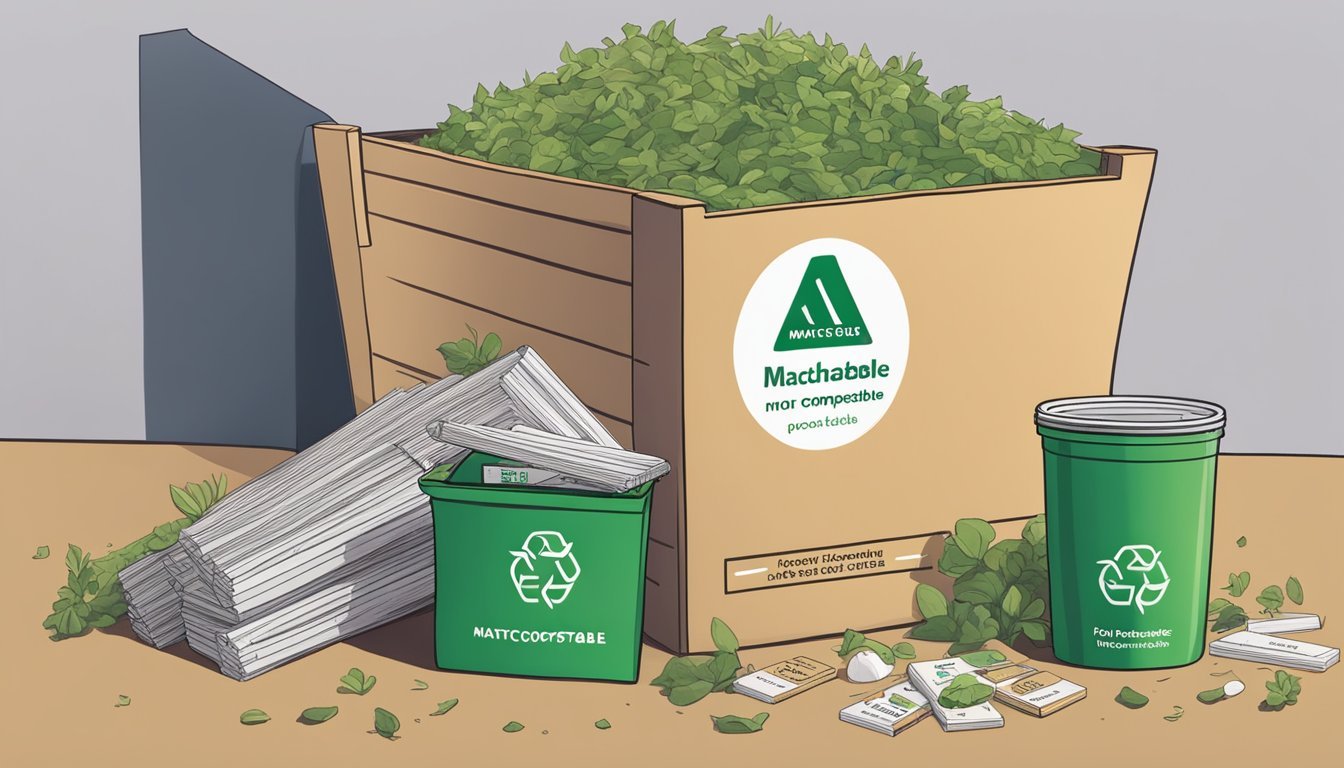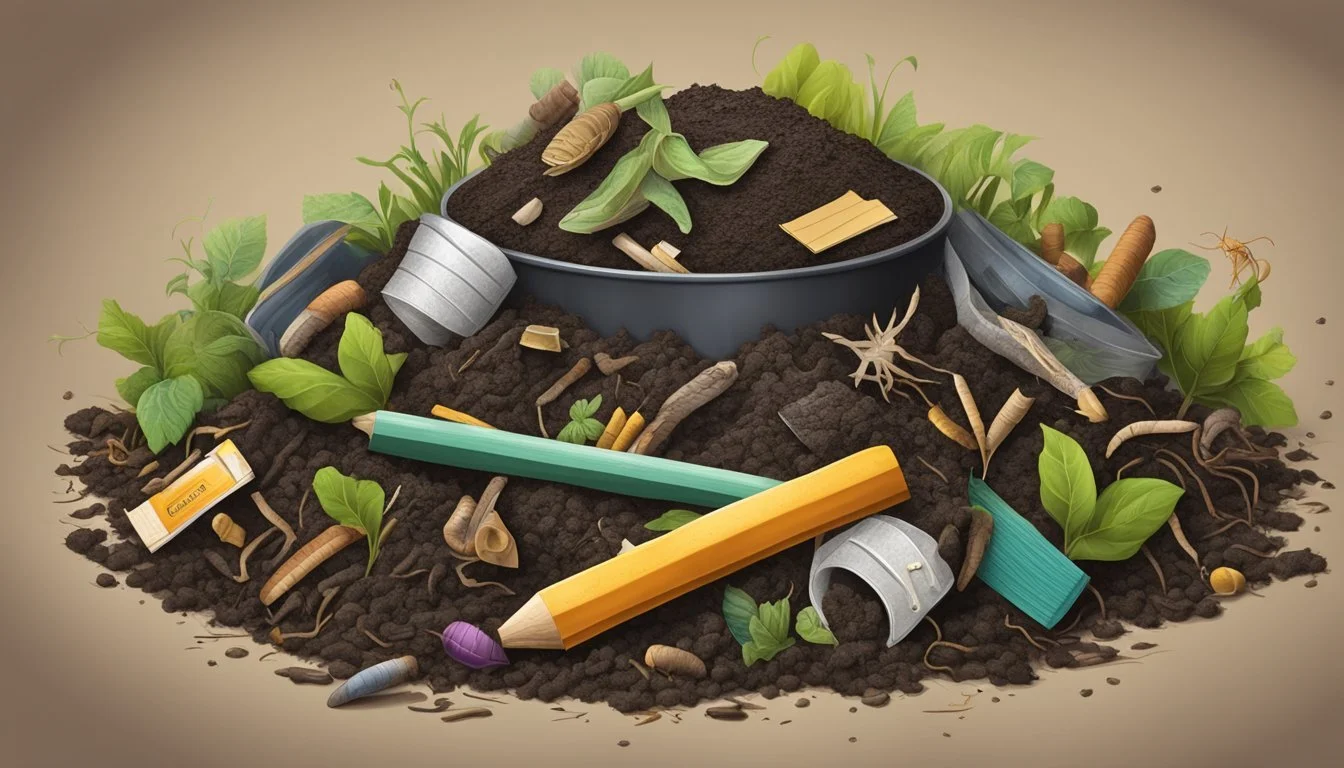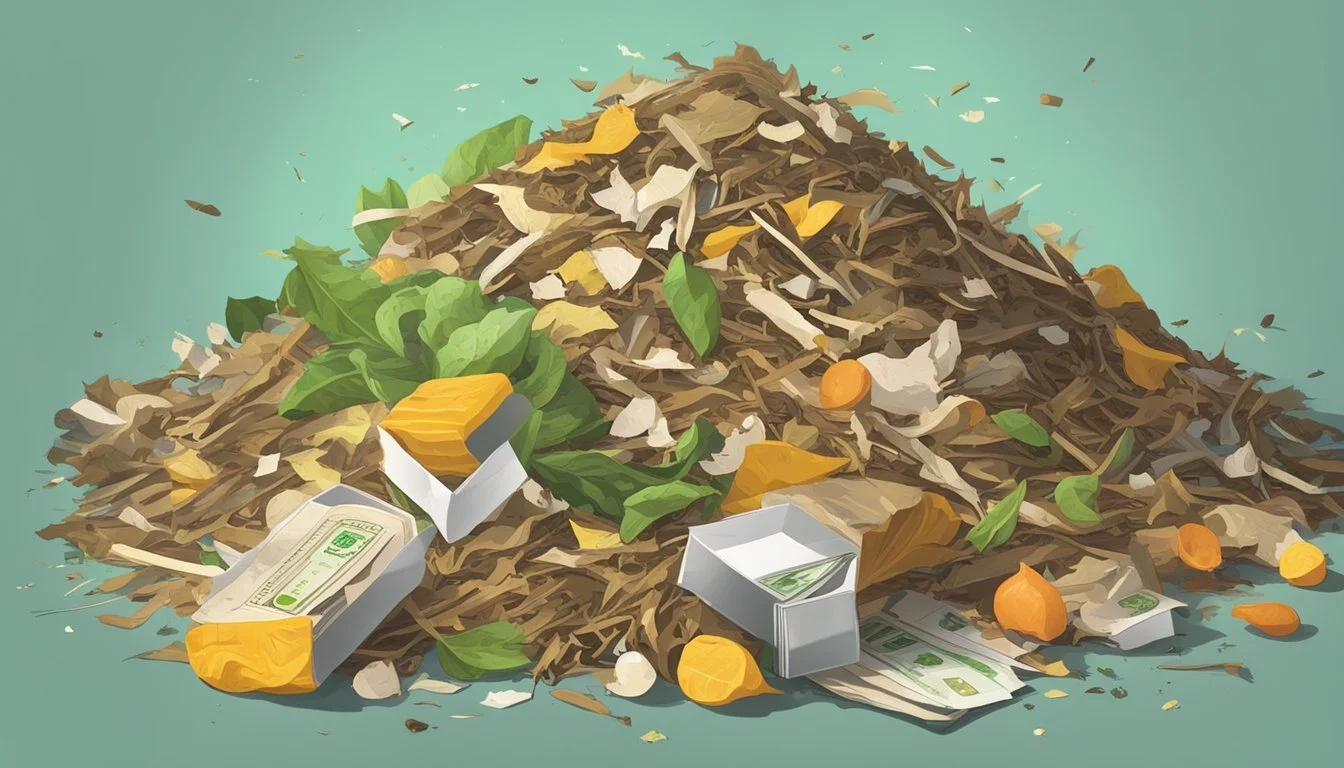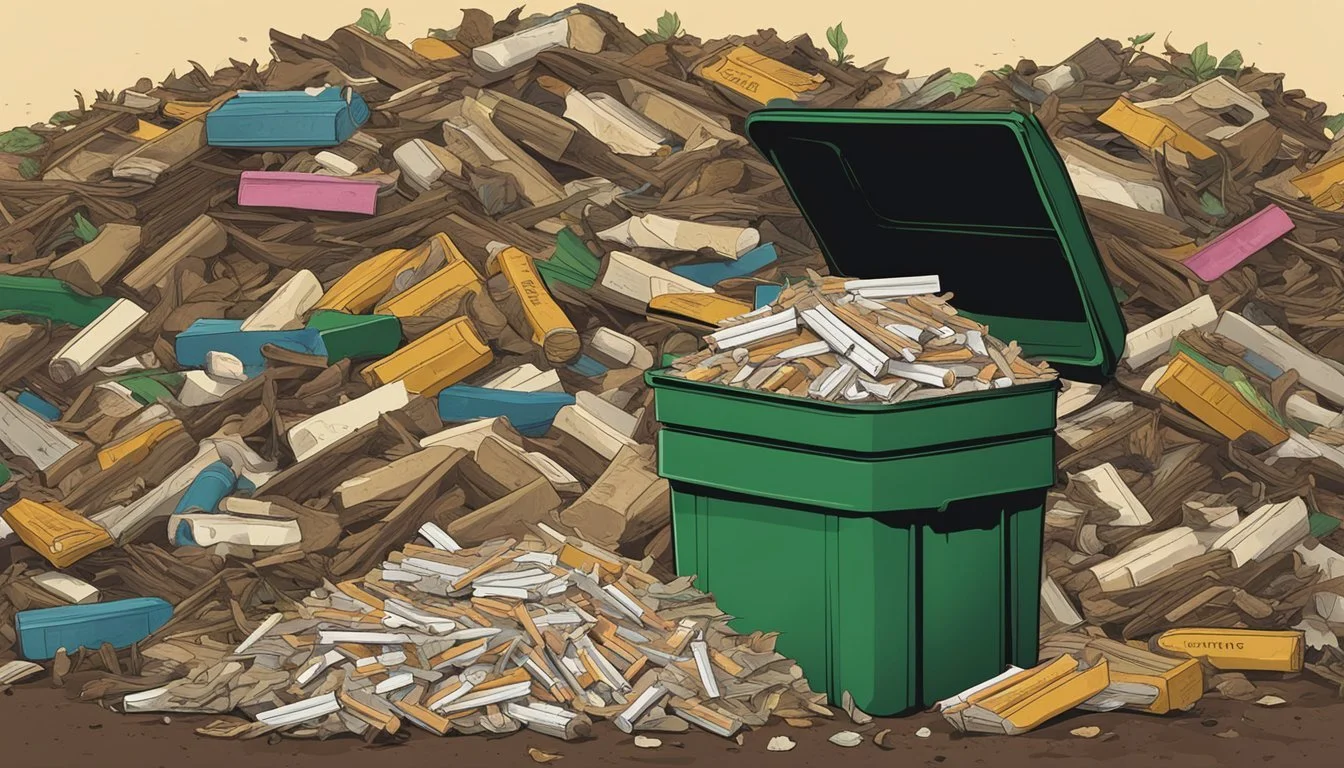Can You Compost Matchbooks?
Uncovering the Facts About Match Disposal
When looking at the various everyday items one can compost, matchbooks often arise as a point of consideration for those aiming to reduce their waste. Composting is a practice that can convert organic waste into nutrient-rich fertilizer for gardens, and commonly includes materials like food scraps, leaves, and paper. Matches, being primarily made of wood and paper components, are materials that can generally be broken down biologically. Thus, they appear to be suitable candidates for inclusion in a compost heap.
However, the compostability of matches isn't just a straightforward 'yes' or 'no' — it requires a more nuanced understanding. The composition of matches includes not only the wood or paper but also the chemicals used for ignition, such as potassium chlorate and phosphorus sulfide. While used matches have already burned these chemicals, there remain residual amounts. Depending on the specific substances used in the match heads and the sustainability of the wood sources, matches can potentially be added to compost piles, but the impact of these chemical residues on the composting process and the resulting soil health should be taken into account.
For individuals managing a backyard compost system, adding used matches in small quantities is unlikely to cause harm and can contribute to the organic matter of the pile. The used matches should, however, be completely extinguished to avoid any risk of igniting the compost materials. Care should be taken to keep the balance of the compost by mixing in a variety of green and brown materials to ensure that it remains healthy and effective at breaking down organic waste into compost.
Composting Basics
Before delving into the role matchbooks can play in composting, it's essential to understand the foundational principles of the composting process and its environmental benefits.
What Is Composting?
Composting is the natural process of recycling organic waste materials into a valuable organic fertilizer known as compost. It involves the decomposition of organic matter which, over time, breaks down into a nutrient-rich soil amendment thanks to the concerted efforts of microorganisms, fungi, and other decomposers. The amalgamated mixture broadly falls into two categories:
Brown material: This includes items such as dead leaves, branches, and cardboard, which provide carbon.
Green material: This encompasses substances such as fruit and vegetable scraps and lawn clippings that supply nitrogen.
The optimum composting process achieves a balance between these two types of materials, aiding microorganisms in efficiently breaking down the contents into compost.
Benefits of Composting
Composting offers numerous advantages not only for soil and plants but also for the environment:
Soil Enrichment: Compost improves soil structure, moisture retention, and provides a diverse range of nutrients for plants.
Waste Reduction: By converting organic waste into compost, it diverts the waste from landfills where it would release greenhouse gases.
Environmental Health: Utilizing compost reduces the need for chemical fertilizers, promoting a healthier and more sustainable ecosystem.
Through composting, one effectively returns organic materials back to the earth, fostering a circular ecosystem that is beneficial for both the environment and the growth of new plants.
Compostable Materials
In composting, identifying which materials are suitable for the process is crucial. The section below explains the types of organic materials that are compostable and delineates the importance of maintaining proper brown and green ratios in compost heaps.
Organic Materials in Compost
Materials deemed compostable are those that can break down into natural elements in a compost environment, often becoming nutrient-rich soil. Organic material is the backbone of composting and encompasses a wide range of items, including but not limited to:
Leaves: A source of carbon, leaves are an excellent 'brown' material.
Paper and Cardboard: Must be shredded and free from inks and plastics.
Food Waste: Includes vegetable scraps, fruit peels, and coffee grounds, but excluding meat and dairy.
Coffee Grounds: A nitrogen-rich 'green' material that aids in composting.
Grass Clippings: Also a 'green' material, it should be layered with 'browns' to avoid clumping.
Wood Chips: Contribute to the 'brown' materials and provide aeration.
These materials are biodegradable, meaning they can break down biologically with time, unlike synthetic materials that remain inert.
Understanding Brown and Green Ratios
A balanced mixture of 'brown' and 'green' materials is essential for a healthy compost pile:
Brown materials are rich in carbon and include dried leaves, branches, and cardboard.
Green materials are rich in nitrogen and encompass items like food scraps, coffee grounds, and grass clippings.
A good rule of thumb is to maintain a ratio of about 3:1 (brown). Below is a simplified breakdown:
Browns (Carbon-Rich) Greens (Nitrogen-Rich) Ratio Leaves Food Waste 3 parts : 1 part Paper/Cardboard Coffee Grounds Wood Chips Grass Clippings
This ratio supports the microbial activity necessary for composting and helps maintain a neutral odor and deterring pests.
Non-Compostable Materials
In composting, discerning what materials should not be included is crucial for maintaining a healthy compost pile and ensuring that the final compost is safe for use in gardens and on farms.
Items to Keep Out of Compost
Trash: Do not include general household trash, especially those that are not biodegradable, as they will not break down and can contaminate the compost.
Landfill Items: Remember that what is typically sent to a landfill, such as certain plastics and glass, has no place in a compost bin.
Plastic: It does not decompose and can release harmful chemicals into your compost, soil, and the environment. Always keep plastic out of your compost pile.
Glass: Non-biodegradable and can cause physical harm if broken; never add glass to compost.
Inorganic Fertilizers: They contain chemicals that can disrupt the natural composting process and harm beneficial microorganisms.
Chemicals: Household cleaners and other chemical substances can kill the beneficial bacteria necessary for composting, so they should be avoided.
This list is not exhaustive, but it covers common materials that should never be added to a compost heap. Always check for local composting guidelines, as regulations and best practices can vary by region.
Composting Matchbooks
In the context of sustainability, the disposal of used matchbooks via composting presents itself as an environmentally friendly practice. It is important to understand the compostability of matchbooks and the safety measures one should take when including them in a compost pile.
Can Matchbooks be Composted?
Matchbooks typically consist of paper (often cardboard) and wood for the match sticks, with phosphorus, potassium chlorate, sulfur, binders, and fillers making up the match heads. The wood and paper components are biodegradable and can contribute to the composting process. Here are the specifics:
Used Matches: Safely disposing of used matches in a compost pile is acceptable. The organic materials such as wood and paper decompose over time.
Unused Matches: They should be avoided in compost due to the undeployed chemicals in the match heads.
The match stick and any remaining burnt match head become part of the compost's organic matter, while any chemicals that had been present are typically neutralized during the burning process.
Safety Considerations for Composting Matchbooks
Composting matchbooks should be conducted with caution to avert any fire hazard:
Before Composting: Matches must be completely used and cooled to eliminate fire risks.
Location: Place them in the center of the compost pile, away from the edges, to prevent any unintended ignition.
Unused matches should be excluded due to the reactive nature of their heads, which could pose a risk if not handled correctly. The presence of potassium chlorate and phosphorus—the reactive materials—requires careful disposal separately from the compost heap.
Factors Affecting Compost Decomposition
Effective composting requires a balance of factors that influence the rate and quality of decomposition. These elements are crucial for microorganisms to break down organic matter into a nutrient-rich end-product.
Moisture and Compost
For compost to decompose efficiently, it requires adequate moisture. Moisture helps sustain the microorganisms that break down organic matter. The ideal moisture content for composting should be between 40% to 60%. To maintain proper hydration, one can add water or dry materials to adjust the moisture levels as necessary.
Temperature and Aeration in Composting
Temperature and aeration are interlinked and significantly impact the composting speed. Aeration supplies oxygen, essential for aerobic microorganisms. Compost piles should not exceed 65°C (149°F), as extreme heat can kill these helpful organisms. Regular turning of the pile ensures oxygen flow and uniform temperature.
Material Size and Surface Area
Decomposition is faster when the material size is smaller because it increases the surface area exposed to microorganisms. Chopping or shredding materials promotes quicker breakdown. A balanced carbon to nitrogen (C/N) ratio, typically between 25:1 and 30:1, is also important for efficient breakdown of compost materials, providing both energy (carbon) and protein (nitrogen) for the microorganisms.
Compost Use and Environmental Impact
Compost serves as a sustainable alternative to chemical fertilizers, offering numerous environmental benefits. The integration of compost into soil management practices influences soil health and contributes to a broader, positive environmental impact.
Using Compost as Fertilizer
Compost provides a plethora of nutrients necessary for plant growth, which in turn converts bio-degradable waste into a valuable resource. Utilizing compost as organic fertilizer enhances soil structure, boosts moisture retention, and promotes a healthy, biologically diverse ecosystem within the soil. This natural process negates the need for synthetic fertilizers which often carry environmental risks such as nutrient runoff causing water pollution.
Benefits of using compost as organic fertilizer include:
Enriching soil with vital nutrients and beneficial microorganisms.
Improving soil aeration and water retention capacity.
Reducing dependency on chemical fertilizers that may harm the environment.
Compost and its Effect on the Environment
Composting reduces greenhouse gases by diverting bio-degradable waste from landfills where it would decompose anaerobically, emitting methane—a potent greenhouse gas. By converting organic waste into compost and using it for soil amendment, carbon is sequestered in the soil which enhances its productivity and resilience. This process supports plant growth, leading to a more robust environment capable of withstanding extreme weather and reducing the carbon footprint.
Key environmental effects of composting include:
Lowering methane emissions from landfills through waste diversion.
Sequestering carbon in the soil, mitigating climate change impact.
Promoting sustainable agricultural practices and reducing the ecological footprint.
Composting Methods and Practices
Effective composting methods are integral to converting organic waste into nutrient-rich soil amendments. The techniques vary, with hot and cold composting being the primary approaches, each suitable for different settings and scales of operation.
Hot and Cold Composting Techniques
Hot composting involves maintaining a compost pile at higher temperatures, usually between 135-160°F, accelerating the breakdown of organic material. It requires a balance of green and brown waste, proper aeration, and regular turning to maintain oxygen flow and even compost heating. Compost bins are often used to contain and manage the process.
In contrast, cold composting is less labor-intensive and doesn't require as much maintenance. Organic materials are collected in a pile or bin over time and decomposed by the natural activity of microorganisms, resulting in compost after several months to a year. Although slower, cold composting is a passive technique that does not involve regular pile turning.
Hot Composting
Temperature: 135-160°F
Requires: Regular turning, correct balance of materials
Ideal for: Enthusiasts looking for quicker results
Cold Composting
Temperature: Ambient outdoor temperature
Requires: Minimal intervention
Ideal for: Casual gardeners willing to wait
Composting in Different Settings
Whether in urban or rural settings, one can engage in composting practices that cater to their environment. Urban composting often requires a contained system, like a compost bin, to manage space efficiently and maintain aesthetic and sanitary conditions.
Rural composting might use open compost piles or bins but has the advantage of larger space, which allows for bigger operations and the potential to incorporate compost directly into garden soil. Both settings benefit from the nutrient-rich soil amendment that composting provides but will approach the process a little differently based on the constraints and opportunities of their environment.
Urban Composting
Space-efficient systems (e.g., tumbler bins)
Neat and tidy to suit smaller spaces
Rural Composting
Larger, open systems possible
Direct benefit to expansive garden soils
Troubleshooting Common Composting Issues
When maintaining a compost pile, controlling pests and odors, and regulating moisture and temperature are crucial for a healthy decomposition process.
Pests and Odor Control
Pests are attracted to compost piles due to the presence of organic matter. To prevent pest infestation, it's important to:
Exclude problematic materials such as meat, dairy, and cooked foods that are more likely to attract rodents and flies.
Cover your compost with a layer of 'browns' such as dry leaves or straw to mask odors and create a barrier.
Utilize a compost bin with a secure lid to deter pests.
Odors typically develop from an imbalance in the compost pile, often a result of excess moisture or lack of aeration. To combat this:
Turn the compost pile regularly to increase airflow and reduce the buildup of anaerobic bacteria, which cause foul smells.
Balance green materials (nitrogen-rich, moist) with brown materials (carbon-rich, dry) to prevent sogginess and promote odorless decomposition.
Regulating Compost Moisture and Temperature
The moisture level in a compost pile affects the rate of decomposition. To maintain ideal moisture:
The squeeze test: Compost should feel like a wrung-out sponge, moist but not dripping. Adjust by adding water if too dry, or more browns if too wet.
Maintaining the right temperature is critical as it influences the activity of decomposing organisms:
Insulate the pile in colder months to retain heat and sustain microbial activity.
Turn the pile if the temperature exceeds 160°F (71°C) to dissipate excess heat and prevent killing beneficial microbes.
Composting at a Glance
Composting provides a nutrient-rich soil amendment by breaking down organic matter efficiently. This section aims to ensure readers understand both the processes and the misconceptions surrounding composting effectively.
Quick Tips for Effective Composting
Balance: They should maintain a balance between green (nitrogen-rich) and brown (carbon-rich) materials. Green materials include fruit and vegetable scraps, whereas browns encompass dry leaves and cardboard.
Size matters: Smaller pieces decompose faster, so shredding or cutting larger items accelerates composting.
Aeration: Turning the compost pile regularly introduces oxygen, which is crucial for the decomposition process and reduces odors.
Moisture: The compost should be as wet as a wrung-out sponge. Too much water can lead to anaerobic conditions, and too little slows down the process.
Temperature: A well-maintained compost pile will generate heat, which signifies the microbial activity essential for breaking down materials.
Can You Compost Matches?
Used matches: Once matches are fully burnt, they can be added to the compost pile. Matches are primarily wood, which is a brown material.
Safety first: They must ensure the matches are completely cool to avoid any risk of ignition in the compost pile.
Common Composting Myths and Facts
Citrus and onions harm compost: Some believe citrus peels and onions disrupt the composting process or harm worms in vermicomposting systems.
Fact: In moderation, citrus and onion scraps can be composted without any issues.
Compost piles are smelly: There is a misconception that all compost piles produce unpleasant odors.
Fact: Properly managed compost should not emit strong odors. Foul smells often indicate an imbalance in materials or a lack of aeration.
Meat and dairy products can't be composted: Traditional advice often dictates avoiding meat and dairy in compost.
Fact: While these items can attract pests and produce odors, specialized composting methods like Bokashi can handle animal products effectively.
Other Waste Disposal Alternatives
While composting is a beneficial way to manage organic waste, there are other strategies one should consider for reducing the impact of waste on the environment. They include recycling and waste reduction techniques, which can be significant in decreasing the volume of waste sent to landfills.
Recycling and Its Importance
Recycling plays a crucial role in waste management by converting waste into new materials, which can help conserve natural resources and energy. Key points about recycling:
Preservation of Resources: Recycling helps to save raw materials and reduces the need to extract new resources.
Energy Conservation: Manufacturing products from recycled materials often requires less energy than producing them from virgin materials.
Landfill Reduction: By recycling materials like paper, glass, and certain plastics, one can significantly reduce the amount of garbage sent to landfills.
Steps to recycle effectively:
Identify recyclable items: Common recyclable items include paper, cardboard, glass bottles, aluminum cans, and some plastics.
Sort your recyclables: Separating recyclables from non-recyclable trash is essential for the recycling process.
Clean the items: Rinse recyclables to remove residue, which can contaminate the recycling batch.
Beyond Composting: Reducing Waste
Reducing waste at the source offers numerous environmental benefits and can be more effective than managing waste after it's created. Strategies for waste reduction:
Mindful Consumption: Purchase only what is needed to avoid excess that turns into waste.
Reusable Products: Opt for products that can be reused, such as cloth shopping bags and rechargeable batteries, to cut down on trash.
Repair and Upcycle: Instead of discarding items, repair or repurpose them to extend their life and utility.
By implementing these alternatives alongside composting, individuals and communities can effectively manage their waste and lessen the environmental impact.
Conclusion
Composting is recognized as an environmentally friendly way to recycle organic waste into nutrient-rich soil. Matches, which are commonly made from wood or paper materials, fit within the parameters of compostable materials. They decompose over time and can add to the carbon balance in a compost pile.
Used matches should be completely extinguished before adding them to a compost bin to ensure safety. Since matches contain a small number of chemicals from their ignition heads, such as sulfur and potassium chlorate, it's important to limit the quantity added to the compost to avoid any potential risk of contaminating the compost with excessive amounts of these substances.
Composting matches can be a practical component of a comprehensive waste reduction strategy. However, it should be noted that unused matches should not be composted due to the higher concentration of chemicals.
To summarize, here are the key takeaways:
Used matches can be added to compost.
They should be extinguished to prevent fire hazards.
The addition of matches should be in moderation.
Unused matches are not recommended for composting.
The practice aligns with environmental sustainability by reducing landfill waste. Individuals who choose to compost their used matches contribute to a cycle that supports ecological health and conserves resources.
References
When researching the compostability of matchbooks, various credible sources provide insights into the best practices for disposing of used matches in an eco-friendly manner. Here's a brief compilation of references addressing the topic:
Green Matters: They assert that used matches can be composted both in backyard and kitchen compost bins, highlighting that this practice contributes to creating organic fertilizer and enhances soil quality.
Saving Living: This resource indicates that composting used matches is beneficial for the environment and helps in reducing personal environmental impact.
Obsessed Lawn: It lists matches as compostable items and places them in the category of brown compostable materials along with paper towels and food scraps, underscoring their suitability for composting due to the primarily wooden composition.
The following resources are not directly related to matchbooks but offer valuable context about composting materials:
University of Delaware: Experts here list materials that should not be composted, providing a contrast to which items are generally suitable for inclusion in compost bins.
Each source collectively enhances the understanding that used matches, primarily composed of wood or cardboard, are suitable for composting and should be managed responsibly to contribute positively to environmental sustainability.



